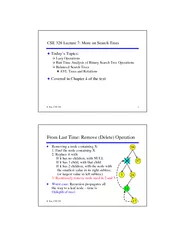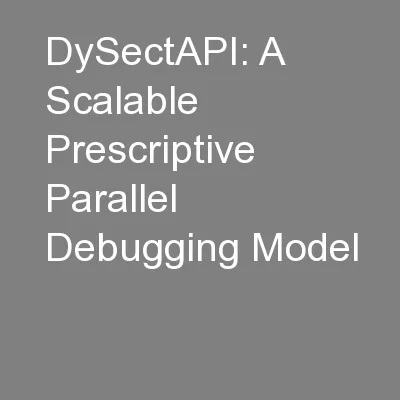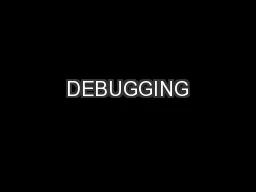Debugging Ruth Anderson UW CSE 160 Autumn 2022 1
Author : faustina-dinatale | Published Date : 2025-08-04
Description: Debugging Ruth Anderson UW CSE 160 Autumn 2022 1 Example Write a function Write a function that will return the set of a users friends with a particular user removed from that set 2 The problem What you want your program to do What your
Presentation Embed Code
Download Presentation
Download
Presentation The PPT/PDF document
"Debugging Ruth Anderson UW CSE 160 Autumn 2022 1" is the property of its rightful owner.
Permission is granted to download and print the materials on this website for personal, non-commercial use only,
and to display it on your personal computer provided you do not modify the materials and that you retain all
copyright notices contained in the materials. By downloading content from our website, you accept the terms of
this agreement.
Transcript:Debugging Ruth Anderson UW CSE 160 Autumn 2022 1:
Debugging Ruth Anderson UW CSE 160 Autumn 2022 1 Example: Write a function Write a function that will return the set of a user’s friends with a particular user removed from that set. 2 The problem What you want your program to do What your program does Not the same! ☹ 3 Debugging tools Python error message assert print Python interpreter Python Tutor (http://pythontutor.com) Python debugger Best tool: 4 Two key ideas The scientific method Divide and conquer If you master those, you will find debugging easy, and possibly enjoyable 5 The scientific method Create a hypothesis Design an experiment to test that hypothesis Ensure that it yields insight Understand the result of your experiment If you don’t understand, then possibly suspend your main line of work to understand that Tips: Be systematic Never do anything if you don't have a reason Don’t just flail Random guessing is likely to dig you into a deeper hole Don’t make assumptions (verify them) 6 Example experiments An alternate implementation of a function Run all your test cases afterward A new, simpler test case Examples: smaller input, or test a function in isolation Can help you understand the reason for a failure 7 Your scientific notebook Record everything you do Specific inputs and outputs (both expected and actual) Specific versions of the program If you get stuck, you can return to something that works You can write multiple implementations of a function What you have already tried What you are in the middle of doing now This may look like a stack! What you are sure of, and why Your notebook also helps if you need to get help or reproduce your results 8 Read the error message Traceback (most recent call last): File "nx_error.py", line 41, in print(friends_of_friends(rj, myval)) File "nx_error.py", line 30, in friends_of_friends f = friends(graph, user) File "nx_error.py", line 25, in friends return set(graph.neighbors(user))# File "/Library/Frameworks/…/graph.py", line 978, in neighbors return list(self.adj[n]) TypeError: unhashable type: 'list' Note: In VSCode you also see a link you can control-click on to take you to the line with the error. List of all exceptions (errors): http://docs.python.org/3/library/exceptions.html#bltin-exceptions Two other resources, with more details about a few of the errors: http://inventwithpython.com/appendixd.html Call stack or traceback First function that was called ( means the interpreter) Second function that was called Last function that was called (this one suffered an error) The error message: daunting














